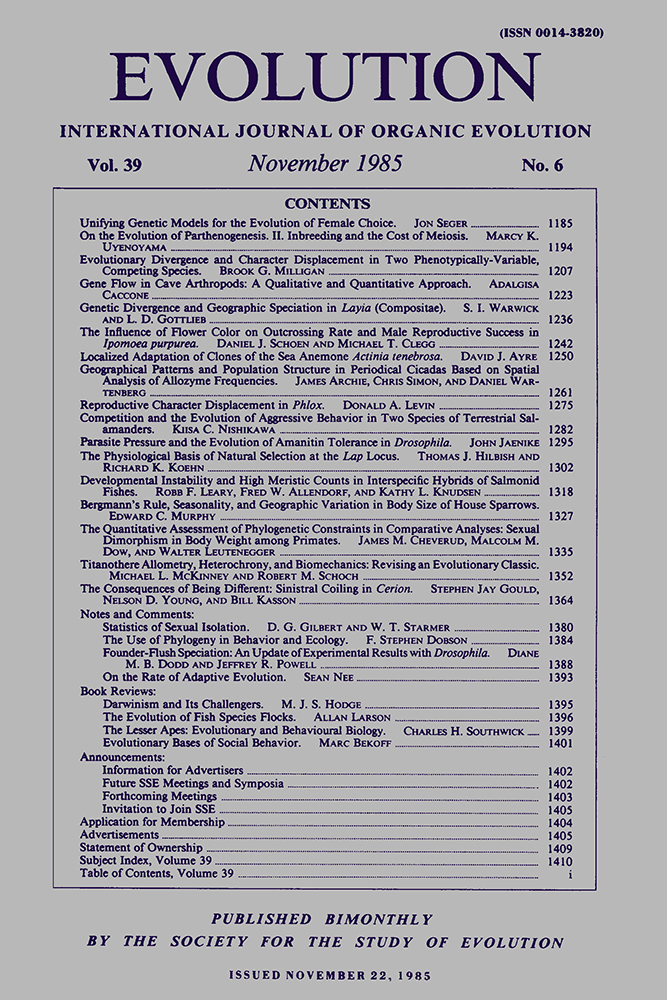BERGMANN'S RULE, SEASONALITY, AND GEOGRAPHIC VARIATION IN BODY SIZE OF HOUSE SPARROWS
Abstract
Body size of House Sparrows is positively correlated with seasonality (annual temperature range) in both North America and Europe. Previously used climatic variables gave inconsistent or contrasting results for the two continental samples. The physiological advantage of large size in seasonal environments appears to be increased fasting ability, but this may be offset somewhat, particularly for females, by other factors, e.g., competitive interactions that influence rates of energy intake or ability to initiate breeding in the spring. It is proposed that minimization of maintenance energy costs on a per individual basis, and thus small size, is advantageous in equable (and predictable) environments.




